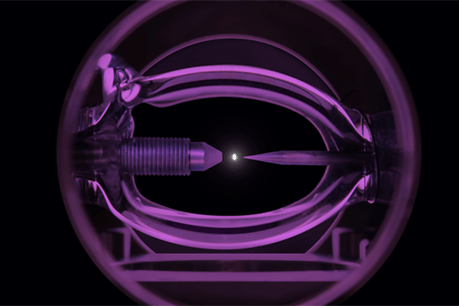What Is a Broadband Light Source?
When it comes to scientific and industrial applications that rely on precise measurement, imaging, or spectroscopy, choosing the appropriate light source can make a significant difference. Among the various types of light sources, broadband light sources (BLS) are a popular and versatile option. But what exactly is a broadband light source, and how does it differ from other types of light sources? In this blog post, we’ll dive into the definition of a broadband light source, its applications, and why a broadband light source is an essential tool in many fields of science and technology.
Understanding Broadband Light Sources
A broadband light source is a light source that emits light over a wide range of wavelengths and typically covers a large portion of the electromagnetic spectrum, from ultraviolet (UV) through visible light and into the infrared (IR) range. Unlike monochromatic light sources, which emit light at a single wavelength, broadband light sources offer a spectrum of light that spans many different wavelengths simultaneously. This broad spectral output is what gives them these light sources the "broadband" label.
Broadband light sources can be generated in several ways, but most common types include:
- Tungsten-Halogen Lamps: These are widely used for their broad spectral output in the visible and near-infrared ranges.
- Xenon Lamps: Known for their powerful broad spectrum, from UV to near-infrared.
- LED-Based Light Sources: These are newer and can cover broad spectra, often tunable to specific ranges based on application.
- Laser-Driven Light Sources (LDLS®): These are increasingly popular due to their high brightness and broad spectrum, combining the precision of lasers with a wide wavelength range.
Why Are Broadband Light Sources Important?
Broadband light sources are critical for many applications where a full spectrum of light is needed to obtain accurate, comprehensive data. Some of the key reasons broadband light sources are so important include:
- Versatility in Spectroscopy: Broadband light sources are often used in optical spectroscopy, which involves studying how light interacts with matter. The wide spectrum allows researchers to examine different materials or substances at various wavelengths, helping to identify their composition, properties, and structure.
- Imaging Applications: In imaging technologies, such as multispectral or hyperspectral imaging, broadband light sources can illuminate samples across a range of wavelengths, providing more detailed information about the object or scene being analyzed.
- Optical Coherence Tomography (OCT): This imaging technique, often used in medical diagnostics (e.g., ophthalmology), relies on broadband light sources to generate high-resolution, cross-sectional images of tissues.
- Material Testing and Quality Control: Broadband light sources are also used in the manufacturing and quality control processes of materials like semiconductors, coatings, and thin films where precise light measurement is crucial.
Key Applications of Broadband Light Sources
Broadband light sources are found in a variety of research and industrial applications. Some notable examples include:
- Scientific Research: Whether it's for fundamental physics, material science, or chemistry, researchers often need broadband light sources to conduct experiments and gather data across multiple wavelengths. For example, broadband sources are used in absorption spectroscopy to study the electronic and vibrational states of molecules.
- Medical Imaging: Broadband light is a critical component of medical imaging technologies like Optical Coherence Tomography (OCT). By using a broad range of light, these systems can create highly detailed images of tissues in vivo, aiding in the diagnosis and monitoring of diseases like cancer and retinal disorders.
- Environmental Monitoring: Broadband light sources are employed in environmental sensing systems to monitor pollutants and measure atmospheric properties. These light sources help to analyze gases and particulates, ensuring more accurate environmental assessments.
- Spectroscopy for Materials Characterization: Whether in quality control for electronics or materials research, broadband light sources are used in various spectroscopic techniques (like FTIR – Fourier-transform infrared spectroscopy) to characterize materials and coatings.
- Photovoltaics: In the testing of solar panels, broadband light sources are used to simulate natural sunlight and evaluate the efficiency and performance of solar cells under different lighting conditions.
Advantages of Broadband Light Sources
- High Sensitivity and Resolution: The broad spectrum allows for high sensitivity and resolution in spectroscopic measurements, making broadband light sources ideal for both high-throughput and precise research.
- Flexibility: Many broadband light sources are tunable or adjustable, allowing users to focus on specific parts of the spectrum depending on the needs of their application.
- Wide Application Range: Whether you're working with UV, visible, or infrared light, broadband sources can cover a wide array of wavelengths, making them suitable for a broad range of fields, from research labs to industrial applications.
Challenges and Considerations
While broadband light sources offer many advantages, there are also a few challenges to consider when selecting the correct source for your needs:
- Power Consumption: High-powered broadband light sources, such as xenon or tungsten-halogen lamps, can consume significant amounts of energy, which may not be ideal in all settings.
- Heat Generation: Many broadband sources produce a substantial amount of heat, which can require additional cooling or heat management in certain applications.
- Wavelength Stability: In some cases, the stability and uniformity of the emitted spectrum are critical. This may necessitate careful calibration and selection of light sources with the correct level of spectral consistency.
Conclusion
Broadband light sources are an indispensable tool in many scientific, medical, and industrial applications. Their ability to emit a wide range of wavelengths makes them highly versatile for spectroscopy, imaging, materials testing, and environmental monitoring. As technology continues to advance, we can expect even more innovative ways to harness the power of broadband light sources, providing even greater precision and performance in a wide variety of fields.
Ready to take your spectroscopy, imaging, or material testing to the next level? Unlock the full potential of broadband light sources for your scientific and industrial applications. Explore our range of cutting-edge broadband light solutions designed to meet the needs of versatile, high-performance applications.
Learn More About Broadband Light Sources Today!


